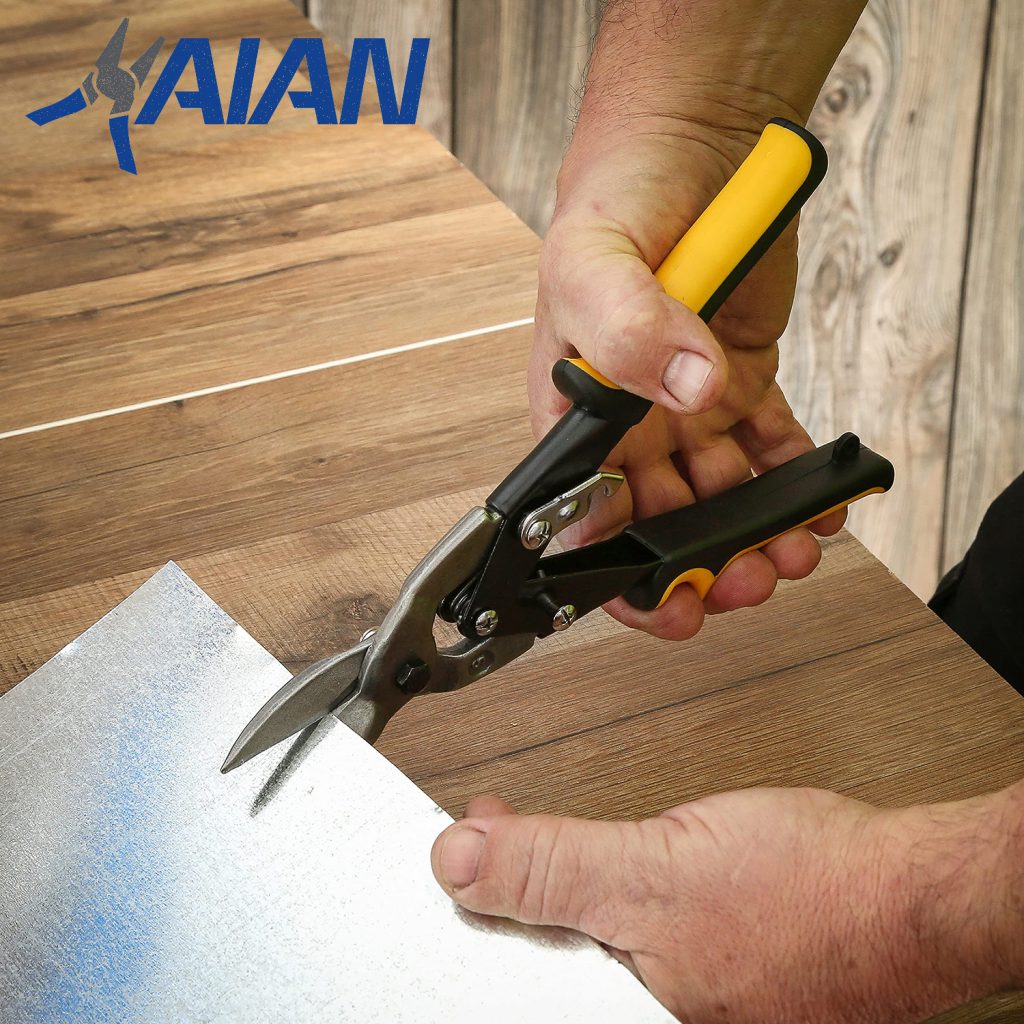
When shopping for cutting tools to use in the aerospace manufacturing industry, you may come across aviation snips. They look like a typical pair of shears. Aviation snips have a handle and a cutting blade. Unlike traditional shears, though, aviation snips support many different types of cuts.
Aviation Snips Explained
Aviation snips are handheld cutters that are designed for use with sheet metal. Also known as sheet snips, they support straight cuts, left cuts and right cuts. Aviation snips have a long handle that’s connected to a cutting blade. You can cut through a piece of sheet metal by placing the sheet metal between the blade and squeezing the handle. While there are other types of cutting tools available, aviation snips are ideal because of their unique design.
They are known as “aviation snips” because they were originally designed for use in the aerospace manufacturing industry. Airplanes are made of sheet metal. To form fuselages and other components, manufacturers must perform irregular cuts. Aviation snips are ideal for making these cuts because they support more than just straight cuts.
Aviation snips are also strong. They can typically cut through aluminum sheet metal in sizes of up to 18 gauges, and they can cut through stainless steel in sizes of 26 gauges.
Types of Aviation Snips
You can use any aviation snips to perform straight cuts. Straight cuts involve cutting a piece of sheet metal in a straight line. With that said, aviation snips may support an alternative type of cut as well, such as left cuts or right cuts.
How do you know whether aviation snips are designed for left cuts or right cuts exactly? When shopping for them, you can refer to the product description. Alternatively, the color of the handle will often reveal whether the aviation snips are designed for left cuts or right cuts.
Aviation snips with a red handle are designed for left cuts, whereas aviation snips with a green handle are designed for right cuts. You may also come across aviation snips with a yellow handle. Those with a yellow handle are capable of performing both left and right cuts.
Upright vs Long Aviation Snips
Aviation snips are also available in upright and long styles. Upright aviation snips feature a blade that rotates 90 degrees from the handle, resulting in an ergonomic design when used in small spaces. Long aviation snips, on the other hand, have an ultra-long blade. You can use long aviation snips to make long straight cuts.
Aviation Snips’ Compound Action
Compare to tin snips, aviation snips’ compound action save more efforts when craftsman use it to cut metal sheet. Like compound action pliers, the unique pivot action desgin providing more leverage and force to the cutting edge.
Does the aviation snips meet ASME standard?
Hi Jacky,
Thanks for your message.
Our aviation snips are manufactured according to ASME B107.500-2020, CATEGORY 16 SHEARS, TYPE Ⅱ, Compound Leverage. Although the American standard is very high, but we finally achieved all the requirements after unremitting efforts. I would like share some key point here.
8.3 Finish
Shears may have a painted, lacquered, enameled, plated, black oxide, or natural finish.
8.5 Pivot
The pivot shall serve as a joint holding the blades together and shall provide a means for blade adjustment, other than peening. Pivot assembly components of Type 1 shears shall be made in accordance with one of the following requirements:
(a) hardened from 30 HRC to 40 HRC
(b) case hardened from 83 HR15N to 90 HR15N with a minimum case depth of 0.007 in.
The center pivot fastener of Type Ⅱ shears shall be material having a minimum tensile strength of 150,000 psi and hardness of 30 HRC to 40 HRC.
8.6 Blades
Blades shall have hardness from 50 HRC to 61 HRC, and matching locations on the blades of any one pair of shears shall be within 4 HRC. Readings shall be taken within 0.12 in. of the cutting edge.
Type Ⅱ blades shall be curved in the cutting(shearing) plane. One or both blades shall have serrated cutting edges. The serrations shall be evenly spaced and well defined throughout the effective length of the cutting blades.
Cutting Testing
Size Minimum Length of Cut Cold-Rolled Steel Gage Stainless Steel Gage
10″ 1.18 in. 18 22
12″ 3.00 in. 24 28
If you have any other question, please contact with us directly. My email address is stephen.ren@hotmail.com, and my cell phone number is +86-186 2501 0688
Thanks and best regards,
Stephen